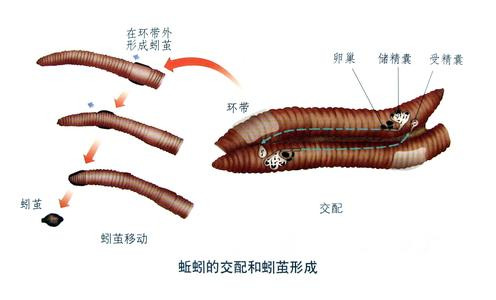Have you ever encountered a wriggling earthworm while digging after rain? Although they look low-key and simple, their reproduction method in the underground world is more efficient and special than many "higher animals"! Today we will reveal: How do earthworms reproduce?

One of the most distinctive features of earthworms is that they are hermaphrodites. What does that mean? It means that each earthworm has both male and female reproductive organs in its body! This is a high degree of adaptation to the living environment.
Deep underground, it is not easy to meet the same kind. So earthworms adopt a "you come and I go" method. Once they meet their companions, they can fertilize each other and lay eggs, greatly improving the reproduction efficiency.
During mating, the two earthworms will tightly entwine along the front of their abdomens, with their bodies interlaced in an "S-shape". This posture is both an expression of emotion (if they have emotions) and a key posture for sperm exchange.
After exchanging sperm with each other, they each preserve the other's sperm and complete self-reproduction in the following days.
The slightly enlarged tissue in the front and middle of the earthworm's body is called the clitellum, which is a key structure for reproduction.
After mating, the earthworm secretes mucus and forms a gelatinous cocoon at the annulus. This cocoon slides over the body of the earthworm as it "retreats", encountering egg cells and previously stored sperm on the way, so that the egg is fertilized in the cocoon.
In the end, this small cocoon is left in the soil and becomes a cradle for the baby earthworm.
Each earthworm cocoon can hatch 1 to 5 small earthworms. They do not have a larval stage, nor will they "break out of the cocoon into a butterfly", but are born directly as miniature earthworms and then grow up slowly.
After a few weeks, they can participate in a new round of reproduction cycle and complete the life relay.
Ecological significance: earthworms are called "the intestines of the earth", and their reproductive capacity directly affects soil fertility, plant growth and ecosystem health.
"Heroes" in agriculture: A healthy earthworm population can significantly improve the quality of cultivated land, and is a natural soil loosening and fertilizer maker.
Natural science enlightenment: Children understand the reproduction method of earthworms, which is a wonderful "first lesson in natural science".
animal tags: earthworm
We created this article in conjunction with AI technology, then made sure it was fact-checked and edited by a Animals Top editor.